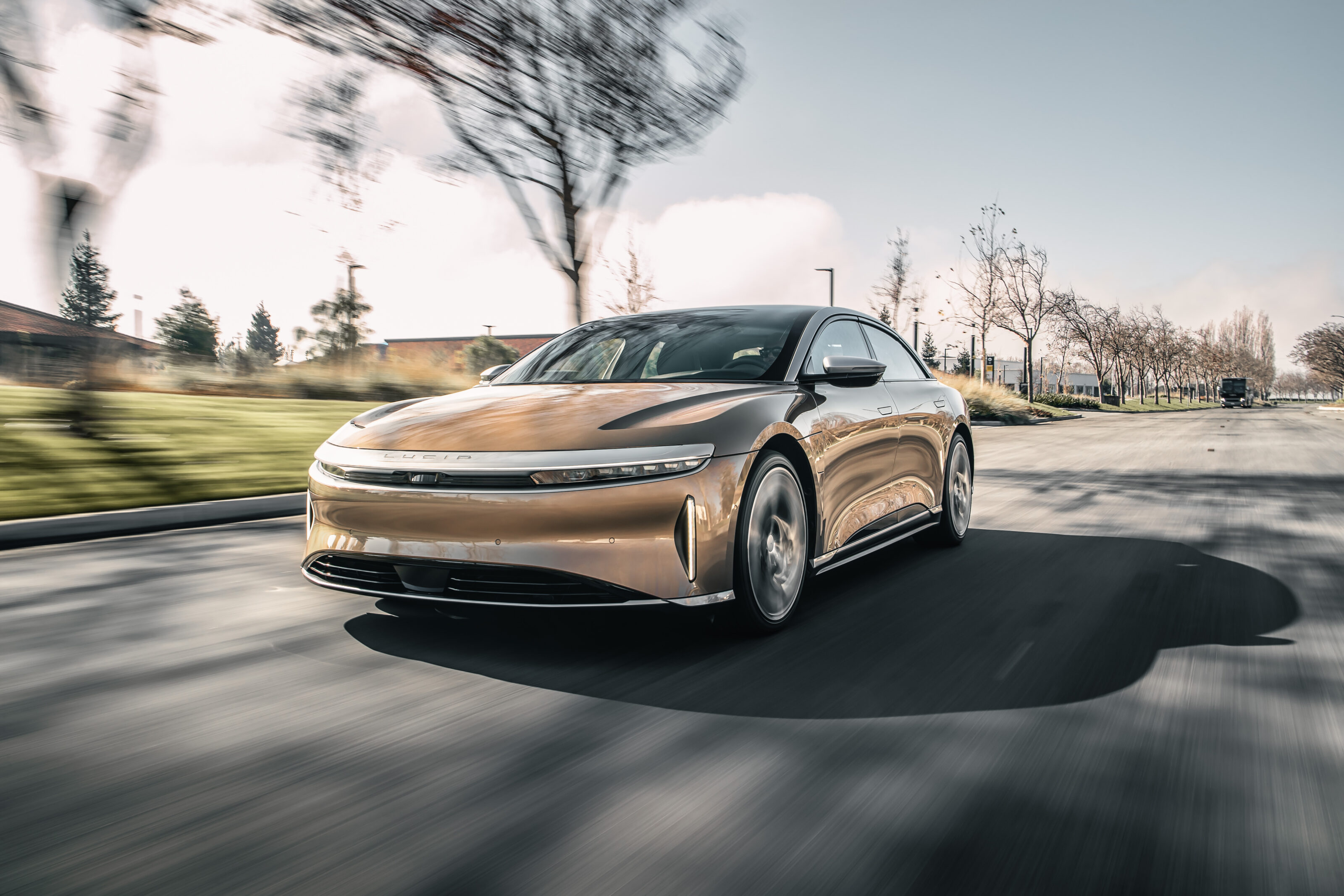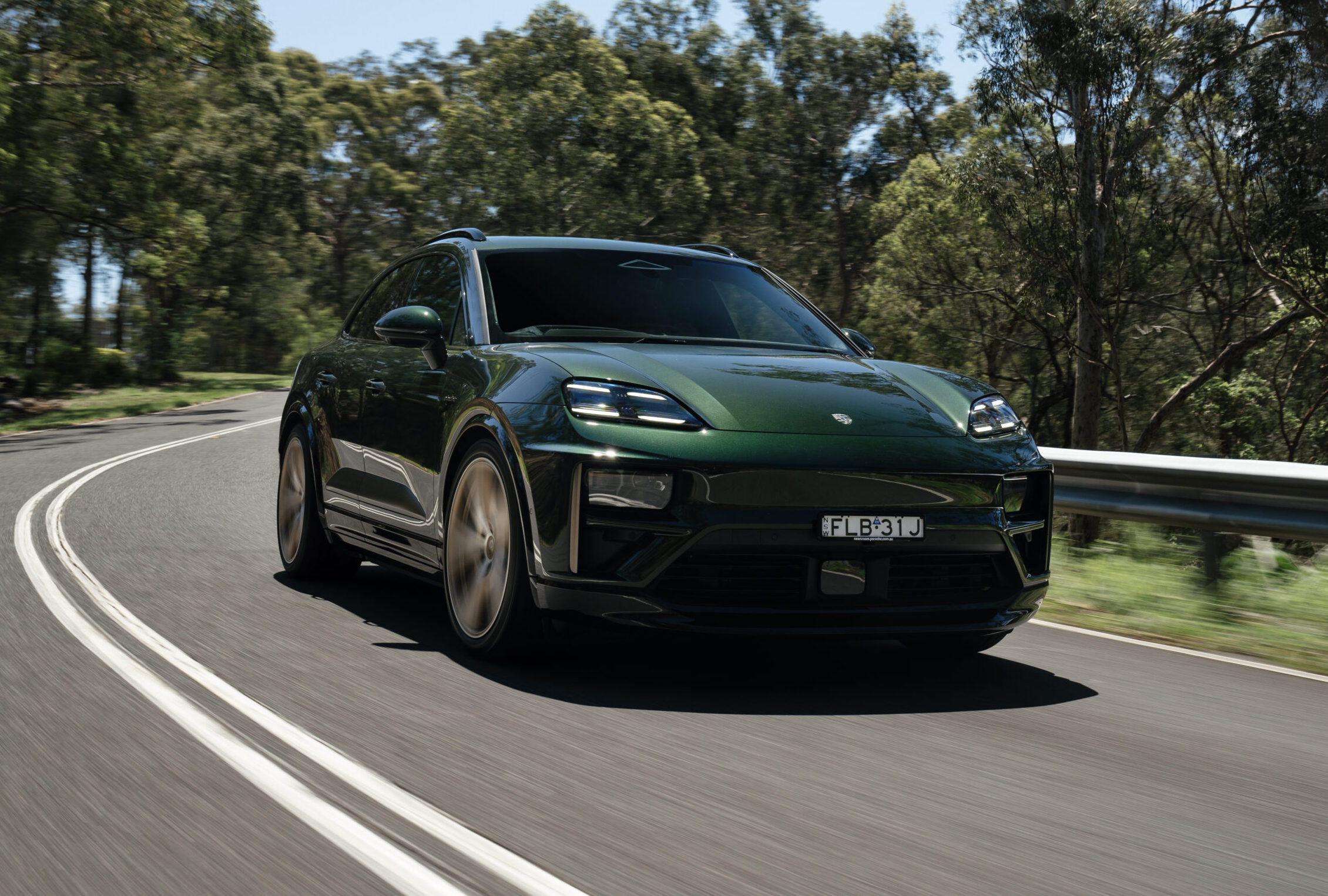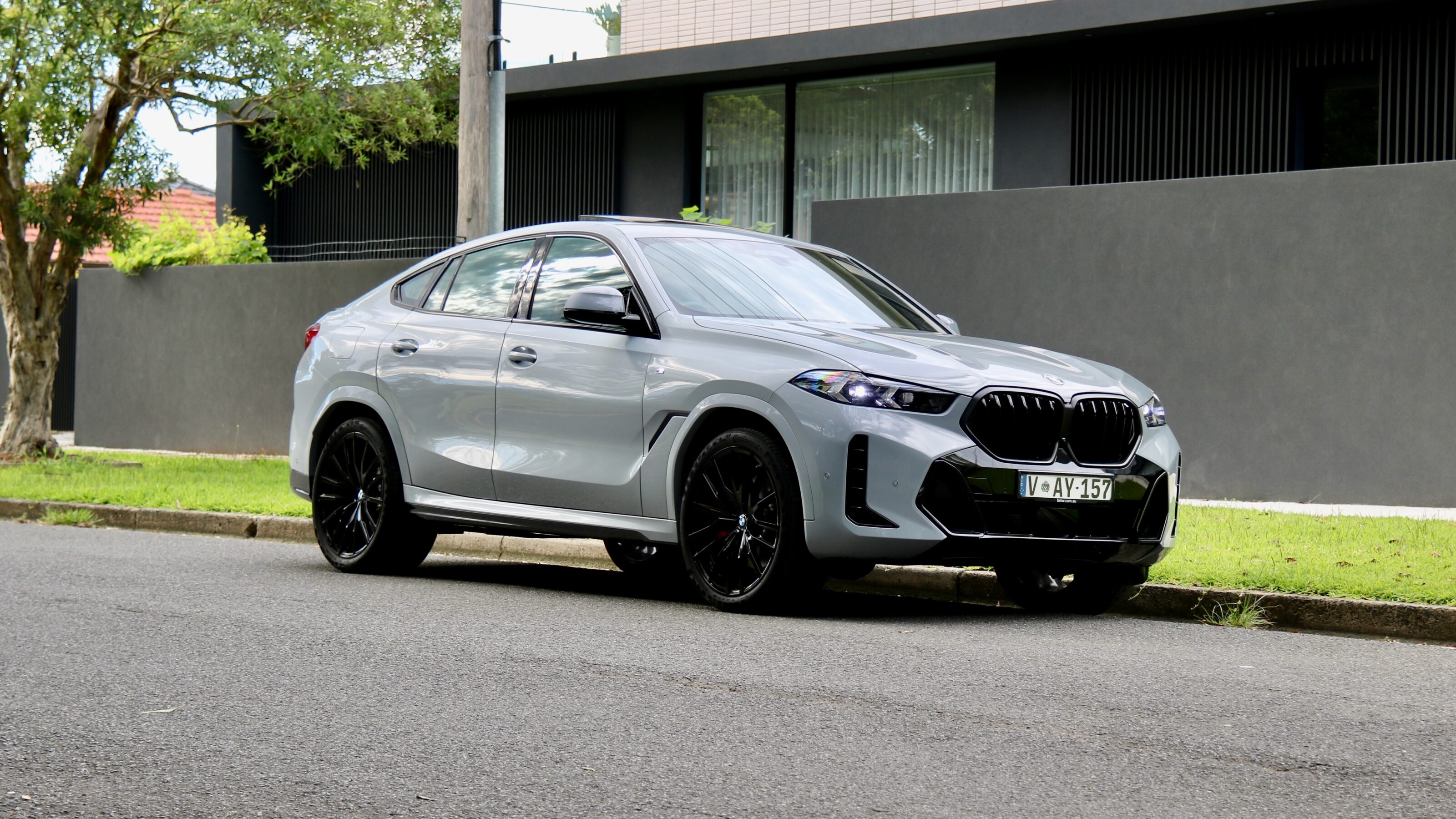Score breakdown
Things we like
- Astonishing performance and chunky range figures
- A smooth, quiet limo when you want to relax…
- …and a sharp and entertaining handler when you don’t
Not so much
- Limited to US sales for now
- Headline figures and spec goodies are at stockier price points
- You need to spec smaller wheels for the headline range figure
There’s been a lot of hype about this one. The story behind it is eerily familiar; a monstrously powerful electric sports sedan that hails from Silicon Valley and which arrives with convention-busting 0-100km/h times and screens galore. And yet you’re not looking at a car that was laser-focused on taking down Tesla, but California’s answer to a new-age Mercedes S-Class. One conceived before Stuttgart’s own EQS had seen the light of day.
The Lucid Air seems like a car of contradictions on the face of it. If the big claim is that it’s a luxe limo with one of the chunkiest range figures we’ve yet seen from an EV – up to 837km from a full charge – then why can you spec one with over 1,000bhp and a 2.5sec launch control run? But drive it and your confusion will probably evaporate quickly into the ether. It’s the car with a convincing answer to any question you dare ask.
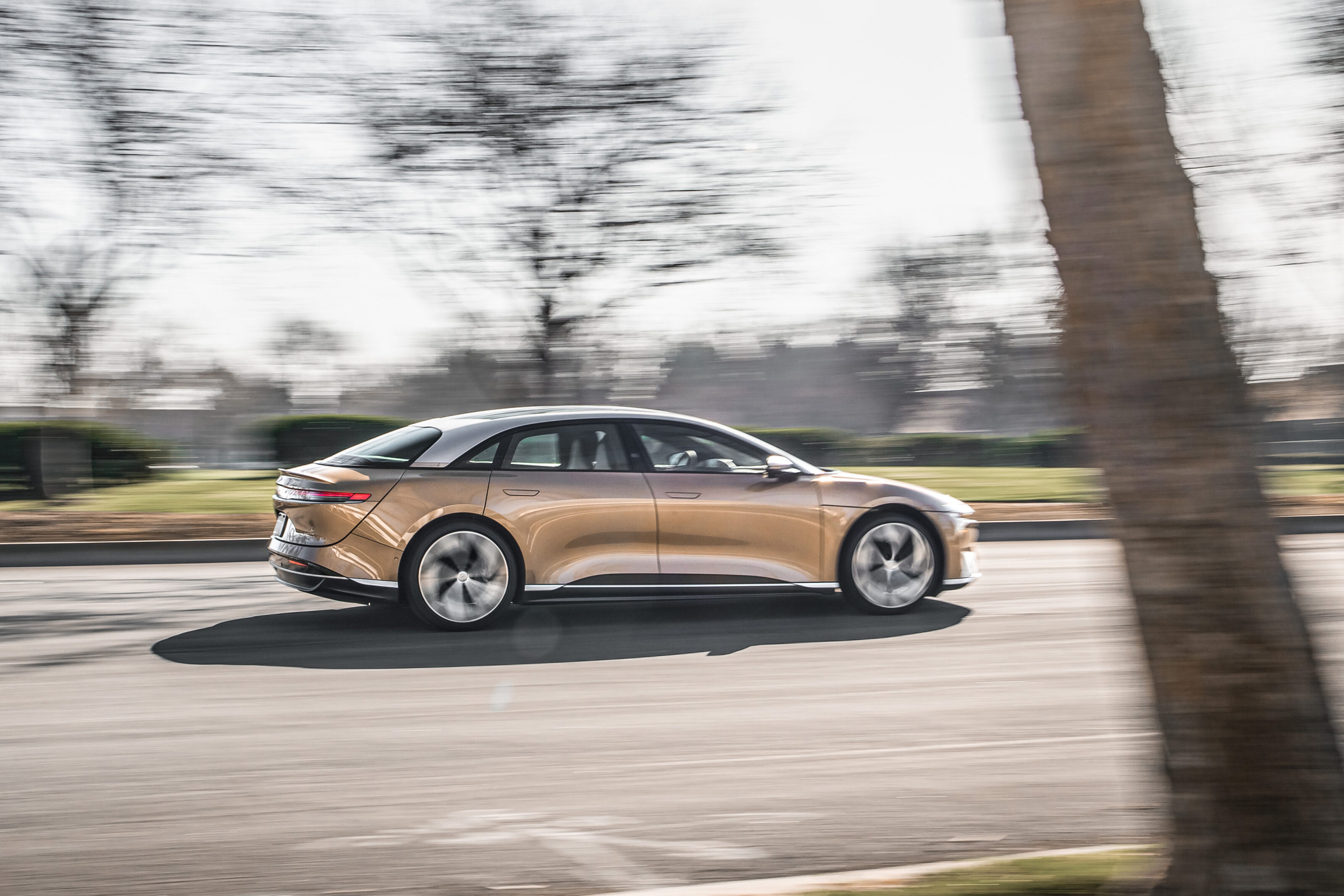
Priced at $169,000 US dollars in its launch Dream Edition trim – about $235,000 AUD – you’d hope it would have an answer for everything. A 113kWh battery powers all versions, and the range kicks off at around $70,000 USD (almost $100,000 AUD) if you factor in federal grants and can cope with a rear-driven car with under 400kW and a whisker over 400 miles of range. There’s a mildly dizzying array of power, range and spec options [https://www.whichcar.com.au/car-news/lucid-air-in-detail] before you get to the fully stacked car we see here. It’s one of two Dream Editions; the R (for Range) combines 696kW power with that headline grabbing 837km claim, while the P (for Performance) tips the see-saw in the other direction, peaking at 828kW and 758km. Both cost the same, and both hit 100km/h in under three seconds. For what that’s worth.
See, on paper it’s slower than a Model S Plaid. In reality you’ll not give two hoots. These more rapid Airs come with three driving modes – the cutely editorialised Smooth, Swift and Sprint – and in the latter, when the traction control works its witchcraft for a launch control start, you’ll not for a moment wish for an EV that can propel you into the middle distance any faster.
Rest assured that Lucid spent money tempting chassis engineers from Aston Martin and Jaguar Land Rover – as well as Red Bull Racing’s aerodynamic guru – to make this behemoth drive properly
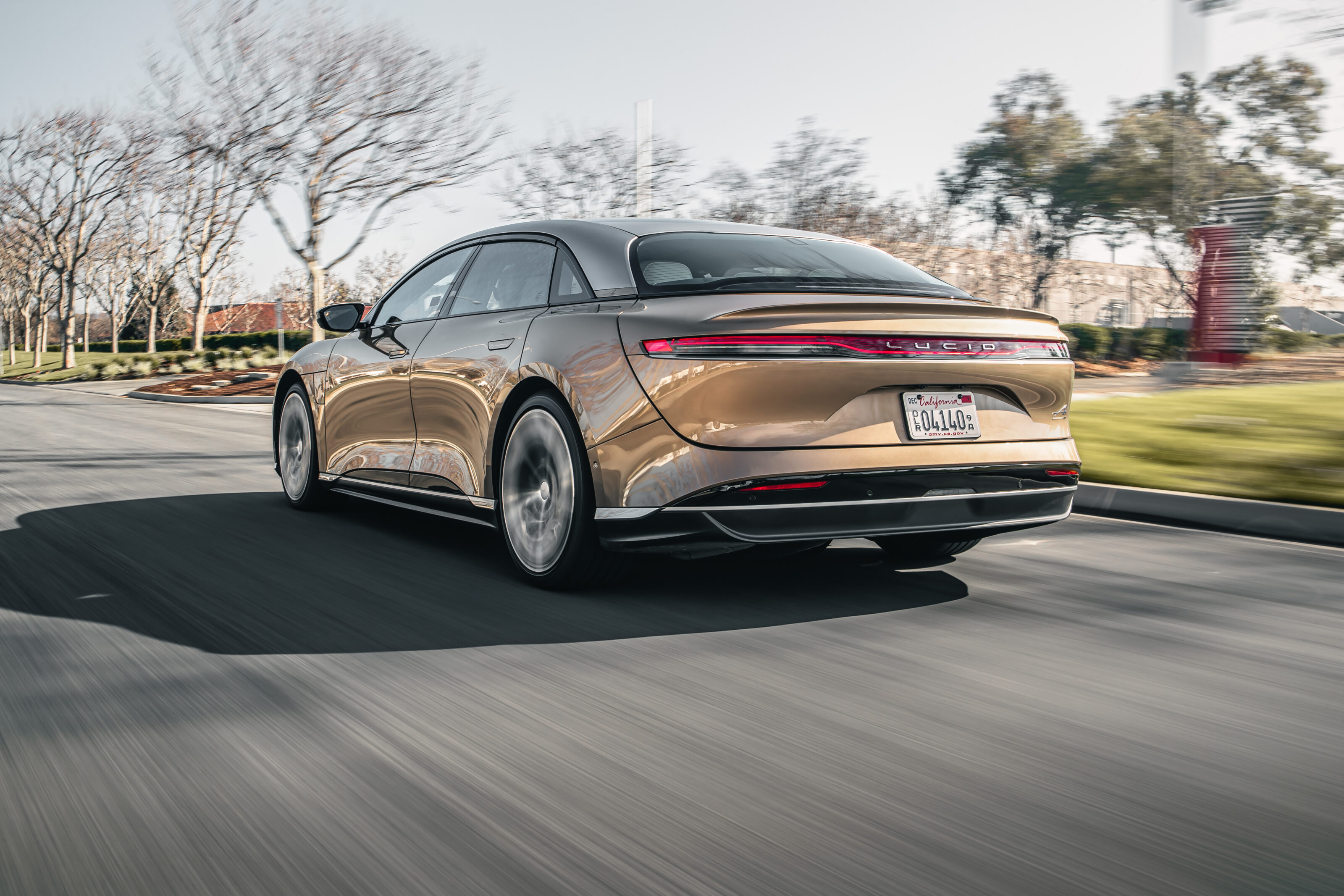
You’ll almost certainly try it once then settle into the other two modes, which each limit power to around 500kW and vary the steering weight, suspension tautness and all-wheel-drive power spread as you cycle between them. The stability control can be loosened – and turned off almost entirely – via a separate button. Lucid had aimed to be the first carmaker to introduce such frivolity to the plug-in world, but delays to the Air’s release meant the pesky Porsche Taycan nipped ahead. If that bothers you, then rest assured that Lucid spent a chunk of money tempting chassis engineers from the likes of Aston Martin and Jaguar Land Rover – as well as Red Bull Racing’s aerodynamic guru – across to California to make this 2.3-tonne behemoth drive properly.
And they’ve only gone and nailed it. Our route takes us from Lucid’s HQ, in a Newark industrial estate, up into some tight, twisting canyon roads. On the first hour of freeway I can barely fathom how smooth and hushed this car is. Almost all EVs thus far have struggled with suppressing every decibel the road noise usually masked by internal combustion, but the Air is as tranquil as a library. And despite this upscale version riding on glitzy 21in wheels (which do knock a few km from the range – go for the optional 19s if you want the full figure) it seems to amble along pretty effortlessly, too. There’s a tangible shift between those three driving modes, but it’ll be rear passengers who moan about any additional stiffness before the driver; you’ll likely appreciate the extra alertness it brings.

Those canyon roads call for Swift, which can send up to 70 per cent of the torque to the rear wheels, with a supplementary loosening of the electronic nannies via a separate button if you’re in the mood. I can’t deny that it always feels chunky – physics can’t exactly be beaten – but the work those Aston and Jag folk have done to make it handle like a performance sedan should is evident. It tucks into corners neatly and will give you more than a hint of oversteer out of them, though only if you’ve asked for it.
If you really ask for it, we’re told the Air will “drift all day long” by chassis man David Lickfold, an ex-pat Brit who’s spent the last six years developing both the Air and a West Coast tan. Power always feels prodigious, enough that I suspect the lower-rung Airs will feel more than adequate as exceedingly brisk road cars and may prove the wisest choice. A very brief dalliance with Sprint on the same road both excites and terrifies – no one needs this much power, really. But it’s childishly pleasing to know it’s there.
The work done to make it handle like a performance sedan should is evident. It tucks into corners neatly and will give you a hint of oversteer out of them, though only if you’ve asked for it
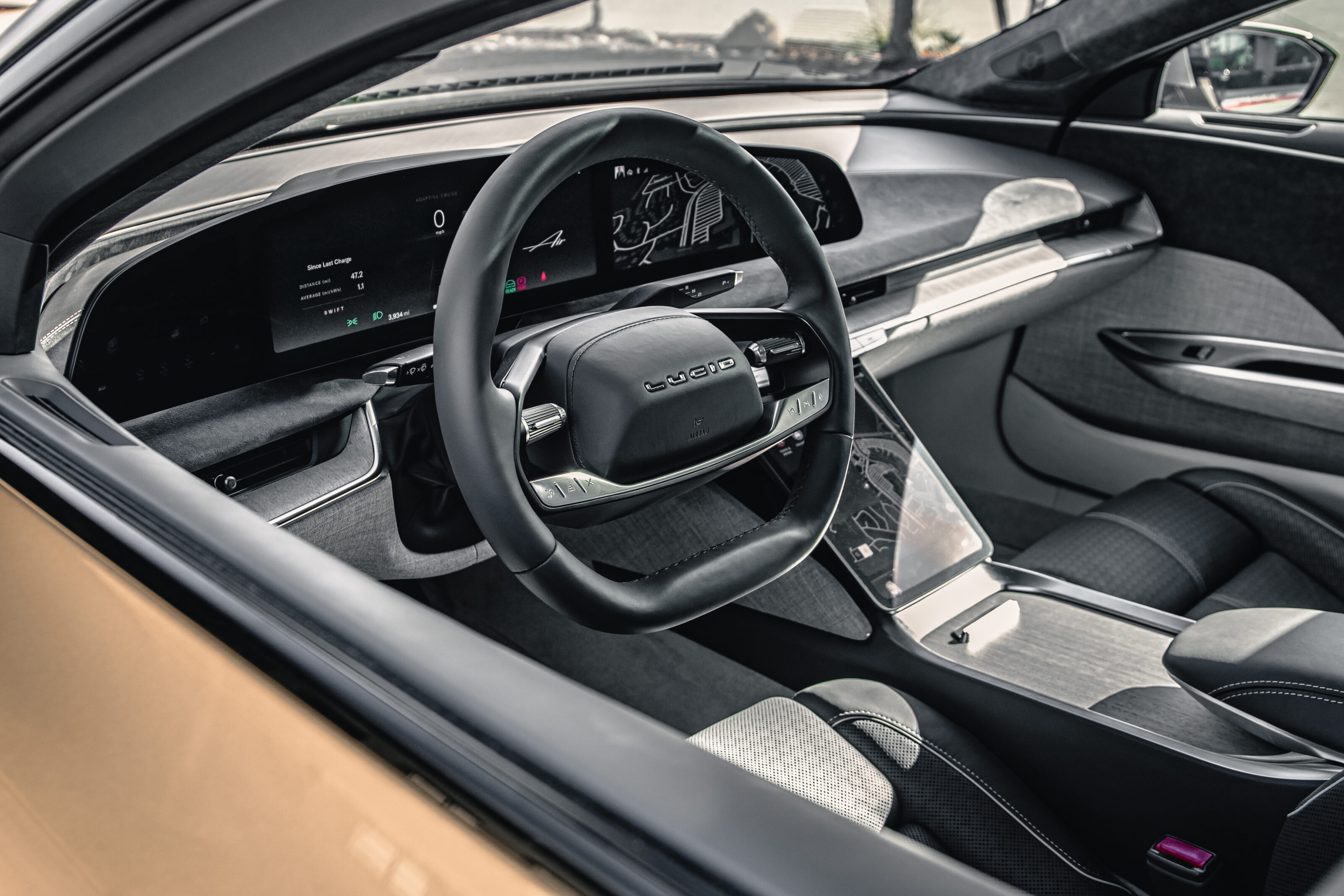
And what of more mature points? The Air looks every inch a traditional three-box design updated for the plug-in age, making it all the more impressive they’ve chiselled out a drag coefficient of 0.20 – the same as the slightly gawkier-looking Merc EQS. It also means plenty of room; the boot opens as the entire rear clam, and you’ve a decent frunk under the bonnet for a combined 738 litres of luggage space, while the interior offers numerous seating configurations, with a traditional three-seat rear bench in our car here. Legroom slots somewhere between a Model S and S-Class.
While the seats here are draped in Nappa leather, there’s an animal-free option available, while alpaca wool is draped across the dashboard and doors. Though vehemently not animal-free, it’s wholly sustainable and brings a unique ambience to the cabin beside the strait-laced German limos placed in the middle of Lucid’s dartboard. As does the ‘Glass Canopy’ roof of higher-spec Airs. Beneath it is a dashboard that melds the worlds of buttons and screens nicely, with the occasional misstep of the glove compartment opening via a sub-menu.
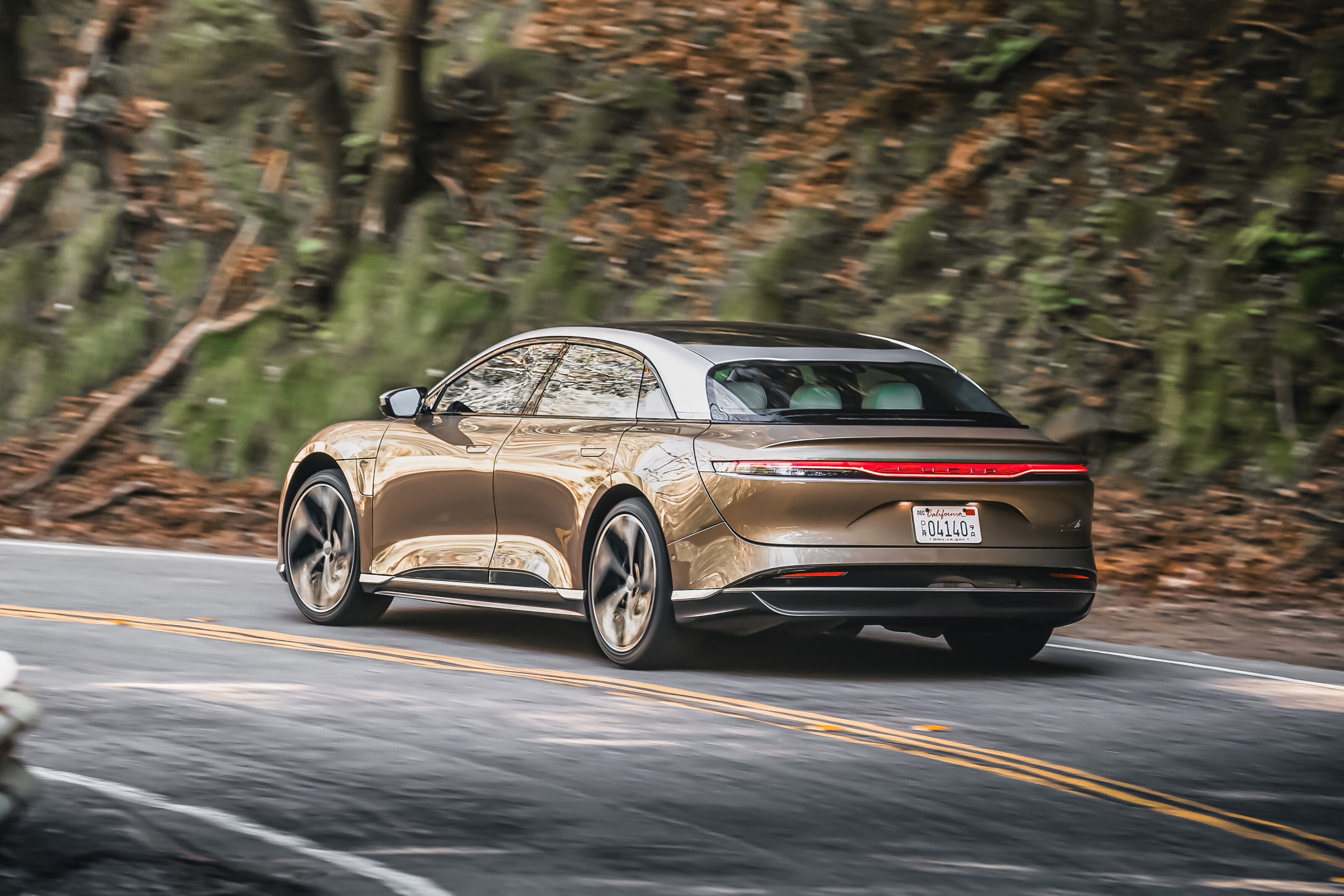
But having physical climate controls and a speedometer slap-bang in front of the driver – not to mention a fully formed, almost circular steering wheel – are nods to what most keen drivers really want from an electric sedan. Namely one foot lingering in the past, to make the move into plug-in performance a friendly step rather than a frightening leap. Though if you crave a bit of drama every now and then, it’s ready and waiting via Sprint mode. The Lucid Air really does have an answer to everything.
2022 Lucid Air Dream Edition R specifications
Score breakdown
Things we like
- Astonishing performance and chunky range figures
- A smooth, quiet limo when you want to relax…
- …and a sharp and entertaining handler when you don’t
Not so much
- Limited to US sales for now
- Headline figures and spec goodies are at stockier price points
- You need to spec smaller wheels for the headline range figure

